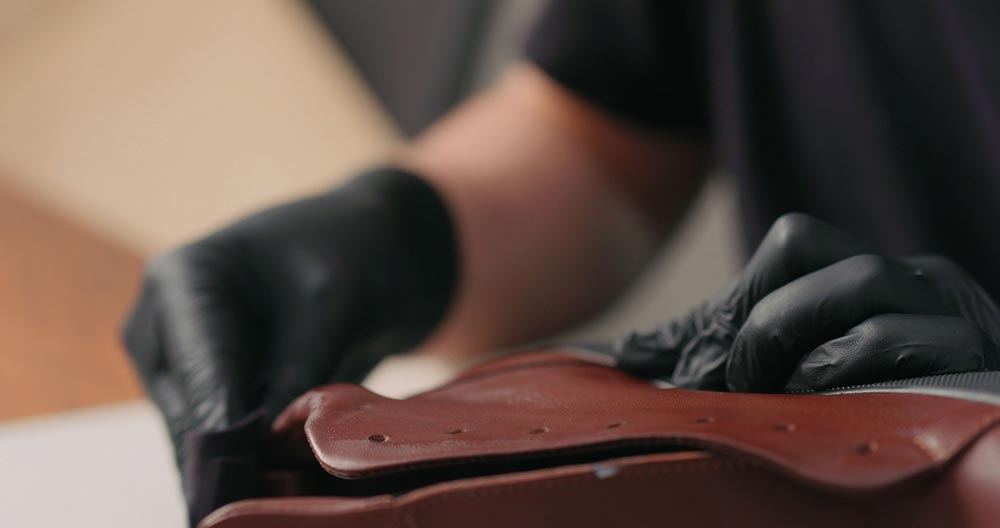
10 May How Have Leatherworking Tools Evolved with Modern Engineering?
Leatherworking is an art as old as civilization itself, with tools that have shaped not only materials but also the course of history. Today, we stand on the brink of a new era where traditional craftsmanship meets modern engineering, bringing with it a wave of innovation that has transformed these ancient implements. This post will explore how these tools have evolved from their rudimentary origins to today’s sophisticated instruments, enhancing both functionality and user experience.
From Tradition to Modernity: A Leather Tool’s Tale
Leatherworking tools have a storied past, tracing back to the earliest civilizations which used leather for clothing, shelter, and storage. Initially crafted from bone, wood, and later metals, these tools were designed to cut, shape, and stitch leather. The evolution from these basic versions to today’s advanced tools mirrors the progress of technology and the enduring importance of leather in human culture.
New Materials, New Possibilities
The introduction of modern materials has been a game changer in the design of leatherworking tools. High-carbon steel blades have replaced softer metals, offering sharper, more durable edges that require less frequent sharpening. Polymers and advanced plastics now feature in handles, providing resistance to wear while reducing the tool’s overall weight. These materials have not only extended the life of these tools but have also made them easier to maintain, revolutionizing how leatherworkers approach their craft.
The Precision of Modern Engineering
With the advent of precision engineering, the manufacturing of leatherworking tools has reached new heights of accuracy. Techniques like CNC machining have allowed for the production of tools that maintain exact specifications, enhancing the consistency and quality of leather goods. Tools like precision-cutting knives and finely-tuned embossing machines demonstrate how engineering has refined the capabilities of traditional instruments, allowing craftsmen to produce work with unprecedented detail and beauty.
Ergonomics: Designing for the Craftsman
Modern leatherworking tools are not only more efficient but also more comfortable to use. Ergonomic designs help distribute pressure evenly, reduce strain, and increase overall comfort, which is crucial for artisans who spend hours at their craft. Features such as padded grips and contours that fit naturally in the hand show how modern design considers the user, ensuring that the art of leatherworking remains a joy rather than a chore.
Technological Integration: Crafting with Precision
The integration of technology like laser cutting and CAD into leatherworking tools has brought a level of precision that was unimaginable in the past. These technologies allow for intricate designs and consistent reproductions that are essential in modern leather crafting. Moreover, they help reduce material waste and enhance the efficiency of the production process, aligning with sustainable practices that are increasingly important in all manufacturing fields.
The Craft Transformed
These technological advancements have not only changed the tools but also the craft itself. Modern tools offer opportunities to experiment with new techniques and designs, attracting a new generation to leatherworking. They bridge the gap between old and new, ensuring the survival and relevance of leather crafting in the modern age.
A Look Ahead
As we explore these innovations, it’s clear that the evolution of leatherworking tools is not just about keeping pace with technology but about pushing the boundaries of what’s possible in leather crafting. These advancements make the craft more accessible, allowing both seasoned artisans and novices to achieve finer work with greater ease.
Wrapping Up
The journey of leatherworking tools from simple implements to complex instruments exemplifies how traditional crafts can thrive alongside modern technology. This evolution benefits everyone from traditional craftsmen to contemporary designers, marrying functionality with creativity.
Get Involved
Are you ready to experience the difference modern engineering makes in leather crafting? Check out our latest range of engineered tools, and join one of our workshops to see these innovations in action. Share your stories and creations with us, and see how modern tools can elevate your leatherworking projects. Join us in forging the future of this timeless craft.


